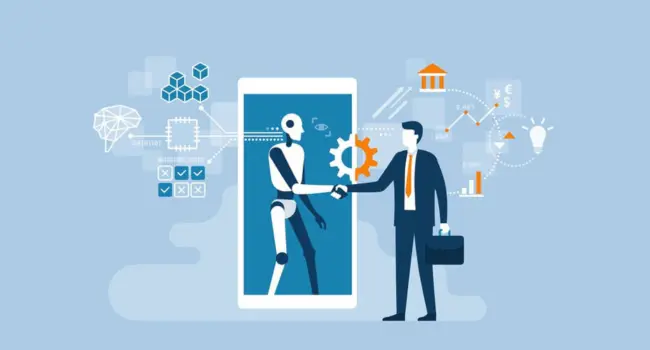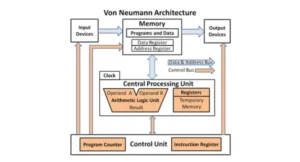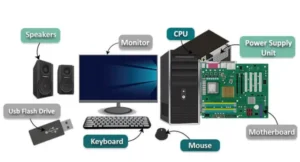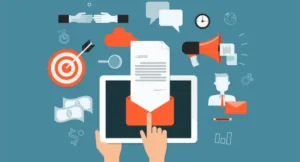Customer service automation is changing the way groups deal with their customers. It helps firms to act quickly and stay working at all hours. With these complex tools, even small teams can complete large projects. This helps firms stay strong in today’s fast-paced world. People regularly interact with businesses through chat, email, and social media. Human agents cannot respond to everyone in a timely manner. Automation can aid in this case. It saves time, saves effort, and keeps customers satisfied. Automation tools improve support speed and quality by answering simple inquiries and giving updates. Every day, this helps businesses expand and better serve their customers.
What is Customer Service Automation?
Customer service automation refers to employing software to help customers. This covers things like chatbots and AI assistants. Such devices use autonomous decision-making capabilities to answer questions and send personalized messages without human intervention. This is also referred to as digital process automation. It enables firms to respond to multiple calls, emails, and social media outlets at once. Some tools, such as conversational AI, act like real humans. However, automation cannot completely replace people. Humans are still needed for hard or emotional tasks. As stated by Gartner, by 2025, more than 80% of customer support will be automated. This shows how quickly customer service is evolving.
Top Benefits of Customer Service Automation

Customer service automation enables firms to respond to clients quickly. It works all the time, including at night. It saves money, keeps consumers satisfied, and makes life easier for support personnel.
24/7 Support Without Breaks
Customer service automation provides 24-hour customer care. This means that your business may help consumers at any time, whether at night or on holidays. You do not have to worry about time zones. Customers that request instant customer support receive help as soon as possible. Automation tools make it easy to give after-hours service. This is ideal for firms who serve clients all over the world. Customers value speedy answers. When people get replies quickly, they remain happy and trust your brand. It also helps businesses stand among their rivals. Being always available is an important benefit for clients as well as businesses.
Lower Costs for Businesses
Customer service automation helps you save money. It reduces costs in customer service via the jobs that humans used to do. This means you won’t have to hire extra staff for easy jobs. You benefit from lower running expenses and long-term savings. They are capable of handling a variety of jobs on several times. This entails big operating savings each month. According to a McKinsey study, groups can save up to 30% on customer service costs. That’s a good strategy to meet your expense reduction goals. Saving money and providing superior support is a win-win for any business.
Faster Help for Customers
Nobody enjoys waiting. With automation, your company can provide faster reaction times. Customers receive immediate help without wait. This greatly boosts resolution speed. People obtain support right away, which reduces reaction time. Customers feel valued when they receive prompt service. It also results in fewer complaints and more satisfied customers. Even during peak times, automation tools can respond fast. That helps your team. When clients are served quickly, they remain loyal. Rapid replies make a major difference. It shows the company cares and is always willing to help.
Better Customer Satisfaction
Customers that are pleased with their experiences tend to remain longer. Customer service automation improves customer experience (CX) by providing clear and timely responses. It consistently provides the same level of quality, which increases customer happiness. Customers prefer when things run smoothly. That is how you achieve a high CSAT (customer satisfaction score). These tools also reduce customer complaints by resolving simple problems fast. Customers will trust your company if they feel heard and helped. Better service keeps customers coming back. Good customer service converts new customers into devoted fans. It’s fantastic for your brand and future expansion.
Less Work for Human Agents
Customer support representatives are assigned far too many jobs. Automation alleviates agent workload by handling repeated tasks. Tools are capable of performing tasks such as ticket routing and smart ticketing. As a result, agents are not forced to repeat tedious tasks. They have more time to tackle difficult challenges. This makes people feel less weary. When routine tasks are automated, agents may devote their time to assisting those in most need. This keeps the team pleased and functioning well. It’s a more effective technique to manage time and energy in customer service.
Easier for Agents to Do Their Jobs
Automation simplifies life for support teams. It helps to better agent productivity with tools to help their work. Real-time coaching for agents provides ideas during live chats or phone calls. Agent assistance tools provide immediate help, such as answers or data. This reduces the tension related to their jobs. When agents feel backed, employee satisfaction rises. They like their jobs better. Everyone enjoys tools that make tough jobs easier. Clear actions and clever tools lead to greater results. Happy agents also aid clients better.
Quick and Accurate Data Collection
Automation is excellent at getting data. Every time someone contacts help, tools can collect such data. This process is referred to as data collecting. CRM integration transfers data directly into the system. You do not need to type it again. Historical data analysis is useful for finding trends in previous chats and phone calls. It also reveals what customers like and dislike. You may monitor metrics such as how quickly issues are resolved. This data helps to improve your service. It also aids in making sensible choices for the future.
Personalized Customer Experiences
Automation can also feel personal. Tools can verify consumer preferences and prior interactions. Then they provide specific interactions and smart replies. This makes every exchange feel unique. Customers receive personalized service that fits to their specific needs. They may also receive tailored proposals, such as tips or product choices. Even when a machine answers, it feels human. This keeps people satisfied and interested. Personalized service fosters trust and shows concern. It supports your company’s nice and helpful image.
No More Long Wait Times
Nobody wants to wait for assistance. With automation, there are no more lengthy wait times. Tools provide speedier responses and immediate assistance. Even at peak hours, they may assist straight away. No-code solutions are simple to setup and utilize. They ensure that clients are not left on hold. This saves time for both the client and the business. Fast responses result in fewer irate calls and more satisfied users. Customers appreciate it when they receive replies quickly and readily.
Easy to Grow with Your Business
As your company increases, so do your client numbers. Automation makes it easier to handle a larger volume of messages. This is known as scalability. You do not need to hire more personnel right away. That means that automation facilitates and simplifies business growth. Tools like cloud contact center systems and IoT in manufacturing environments enable teams to accomplish more with connected devices and streamlined equipment management. They also help with strategic responsibilities like planning and improving service. You save time and money as you expand your business. It’s the most effective approach to service more people while being stress-free.
Works on Many Channels at Once (Omnichannel Support)
Customer service automation can work in multiple locations at the same time. This is known as omnichannel automation. Whether it’s chat, email, phone, or social media, tools provide help everywhere. Customers have the option of communicating through multiple channels. Omnichannel support ensures that all talks remain connected, even when moving between channels. This is known as channel integration. It ensures that service runs smoothly and easily. Customers are not required to repeat information over and over. This makes them pleased. It also helps your staff to stay organized.
Helpful Insights for Smarter Decisions
Every customer message provides data. Automation tools analyze this data with AI-powered insights. These tools can perform predictive analytics to predict future needs. This transforms businesses into data-driven organizations that can make informed strategic decisions based on real customer insights and behavioral patterns. You also receive indicators of success to determine what works and what does not. This allows you to make wiser choices. You can monitor how quickly problems are solved and how happy clients are. These insights aid in better planning. They help firms expand and improve. Making excellent rulings is easier when you have the right information.
Challenges of Customer Service Automation

Customer service automation is useful but not always flawless. Some people prefer human agent help. Bots cannot tackle complex issues. Data privacy and large tools might be difficult to manage.
Some People Prefer Talking to Humans
Even with smart bots, some people prefer to interact with a human agent. They are more comfortable conversing with genuine people. This is because humans possess emotional intelligence and provide a personal human touch. That is something machines cannot always do. Many companies are now utilizing hybrid support methods. This means that bots assist with easy jobs while humans take care of the rest. It’s the ideal combination for good service. Some clients simply want to feel heard by a real person. Giving them that option promotes trust and improves customer service for everyone.
Not All Problems Can Be Fixed by Bots
Bots are ideal for answering simple inquiries. However, some situations are too large or complex. These are referred to as complex issues. High-priority issues or problems with multiple steps require specialized assistance. Bots should take a back seat in these situations and allow humans to take charge. This is known as live agent escalation. Bots and people can collaborate. Bots do the simple tasks. Human agents solve the difficult ones. This ensures that consumers always receive appropriate assistance. It also saves time and ensures that no one becomes stuck with an issue.
Privacy and Security Concerns
Customer service automation runs a large volume of private data. That is why data privacy is so vital. Companies have to stick to strict safety rules. They require robust identity authentication systems and encryption protocols to protect sensitive customer data from unauthorized access. They must also use breach prevention techniques to deter hackers. Tools should also provide legal and safety tracking abilities. This entails continually tracking to ensure data security. Customers are more trusting of businesses when they believe their information is secure. Keeping consumer data private and secure should be a key priority for every firm that uses automation.
All-in-One Tools Can Be Complex
Some customer service products attempt to accomplish everything. These are known as all-in-one solutions. However, these instruments can be overly large or difficult to use. That’s a major automation challenge. They can also be very expensive to set up. These are referred to as high implementation costs. Every team is distinct. Some are tiny. Others have different needs. That implies they require simple instruments that are appropriate for their work. Choosing the correct instrument is critical. It should be simple to use and useful, not confusing. The best tools solve problems, not generate new ones.
Steps to Start Customer Service Automation

Begin by doing a business study to identify any gaps. Then pick the right tools, such as bot builders. Write informative replies, roll out pilot initiatives, and use feedback and system changes to improve.
Step 1: Check What You’re Doing Now
Begin by conducting an operational assessment of your existing customer service. Take a close look at how support works now. Conduct a service gap study to determine where aid is lacking or sluggish. Check prior talks and calls using a historical interaction study to identify usual issues. This operational audit provides a clear picture of what has to be fixed. Knowing where you are weak allows you to plan better. It shows what can be automated and what need human help. This first step is critical for expert customer service efficiency.
Step 2: Choose the Right Tools
Next, select the appropriate tools for your aims. AI implementation should be basic and straightforward. Look for chatbot builders that do not require much code. Choose a good contact center solution for your workforce. To save time and money, use sensible implementation tactics. The correct tools enable your service to run smoothly. They ensure that clients receive quick, useful responses. Good tools also facilitate teamwork. Choose tools that will expand with your business. This phase establishes the foundation for effective automation.
Step 3: Write Helpful Replies and Plans
Write helpful responses to your customers. Create response templates to save time. Make sure the responses reflect your brand voice so that the service feels personalized and respectful. Make response frameworks that bots can follow. This helps to keep responses clear and useful. Good responses keep consumers happy and help address problems quickly. Plan how the bots will answer to certain questions. This step ensures that your client service remains consistent and friendly. It allows bots and people to collaborate more effectively in order to provide the best possible service.
Step 4: Launch and Watch How It Works
Begin with pilot programs to test your automation. Try multiple approaches and utilize trial and error to determine what works best. Create feedback loops so that customers and agents can share their opinions. Keep track of key indicators like as response time and customer satisfaction. Watching how automation works allows you to solve problems quickly. It identifies areas where you might improve or modify your strategies. Launching cautiously helps to avoid major mistakes. This phase ensures that your customer service automation is effective and smooth from the outset.
Step 5: Improve Based on Results
Automation does not end once it begins. Use constant improvement to make it better. Update systems as needed to meet changing needs. Look for ways to streamline operations and increase service speed. Use data and feedback to determine what works and what does not. Over time, bugs will be resolved and new features added. This keeps your customer service knowledgeable and up to date. Improving automation promotes corporate growth and consumer satisfaction. Always search for ways to improve.
Best Practices for Customer Service Automation

Automate high-volume tasks like ticket triage and auto-resolve. Allow humans to handle hard inquiries. Teach your people well, provide self-service choices, and frequently track success through input and KPIs.
Automate the Right Tasks
Not all tasks should be mechanized. Focus on high-volume chores that happen often. These include automated ticketing, resolution, and triage. Automating these tasks allows for faster and more efficient customer support. It helps to cut wait times and avoid mistakes. When you automate the correct chores, your team can focus on more critical issues. This balance improves your service for clients while also making things easier for employees. Do not try to automate everything. Choose chores that will save time and assist clients fast. Good automation improves the overall performance of your support system.
Let Humans Handle Complex Issues
Some consumer questions are too difficult for machines. These are known to be complex queries. Use live agent escalate to direct such queries to human agents. It protocols assure that people are involved as needed. Human loyalty is required to tackle tough obstacles. People know emotions and can provide deeper answers to difficult issues. Bots perform simple tasks, but humans handle the rest. Customers benefit from this joint effort. Including humans in the process boosts trust and happiness among customers. It’s wise to know when to let others take leadership.
Teach Your Team How to Use It
Automation works only when your staff understands how to use it effectively. Provide instructional programs for staff. This reduces training issues and confusion. Good training improves employee engagement and confidence. Implementation and optimization refer to putting the system in place and improving it over time. When your team understands the tools, they can use them more effectively. This results in faster and smarter client service. Teaching the team is critical to successful automation. Well-trained employees make consumers happy and help the business run smoothly.
Let Customers Help Themselves
Self-service solutions enable customers to solve simple problems on their own. Provide self-service knowledge bases with simple instructions. Customers benefit from clear how-to instructions that help them find solutions fast. Make these tools user-friendly to encourage self-service. This reduces the number of inquiries your staff must address. Customers prefer to resolve concerns quickly and without waiting. Self-service choices provide customers with control and freedom. When customers help themselves, your team can focus on more difficult issues. This improves the overall performance and speed of your service system. Self-service is an effective technique to increase customer support.
Keep Checking and Improving
Do not stop working after you’ve started automation. Continue to monitor the progress of the feedback analysis. Proof-of-concept trials can be used to test novel ideas before they take effect fully. Performance analytics allow the tracking of critical metrics such as response times and client happiness. Monitor your KPIs (Key Performance Indicators) to ensure that these goals are met. Always search for methods to improve. Updating your system and resolving issues ensures that your service remains strong. Continued growth helps the business expand and keeps customers satisfied. Good customer service needs consistent care and attention.
Future of Customer Service Automation

Assistance automation will soon become smarter. New AI tools and voicebots will help clients faster. Support will be tailored and effective across all channels for everyone.
Smarter AI Tools Are Coming
New AI tools are being created all the time. Soon, AI avatars will resemble and behave more like real people. Natural language processing (NLP) will allow computers to better know us. Applied machine learning enables sentiment analysis tools to understand how customers feel and respond appropriately to their emotional state. They will leverage improved contextual detection to provide more intelligent answers. This means that bots will answer issues more clearly and quickly. The future of AI will be more helpful and friendlier. These smart solutions will make customer service easier and more effective for both businesses and consumers.
Voice-Based Support Will Get Better
Voicebots are quickly becoming smarter. Speech recognition allows computers to better interpret spoken language. Voice biometrics provide safe verification for who is speaking. Voice-driven systems can carry out more jobs without making mistakes. This implies clients will receive faster help over the phone. Voice support will seem natural and simple to use. It will solve issues without the need for humans to answer basic questions. This allows customers to get quick answers at any time. Better voice-based support will make phoning customer service easier and less frustrating in the future.
More Personalized and Connected Experiences
The future of customer service revolves around unified customer experience management. This implies that all aspects of help work easily. Tools will improve talking meetings. They will be able to provide more useful answers since they will better understand the context. This makes clients feel seen and loved. Relationship building entails developing trust and connection with clients. Customers benefit from individual service because it provides them with answers that are tailored to their specific needs. Customers no longer have to repeat themselves when moving channels thanks to connected services. This ensures that every customer receives service that is quick, polite, and clever.
Final Thoughts on Customer Service Automation
Customer service automation is more than simply a fad. It helps firms expand and save money. It delights customers with prompt and personalized assistance. A smart plan is essential. Keep people involved as needed. Always secure consumer information. Automation promotes client loyalty and keeps the brand stable. It also improves ROI. Good automation helps any firm, large or small, perform better. When done correctly, it provides numerous benefits and keeps people returning time and again.




